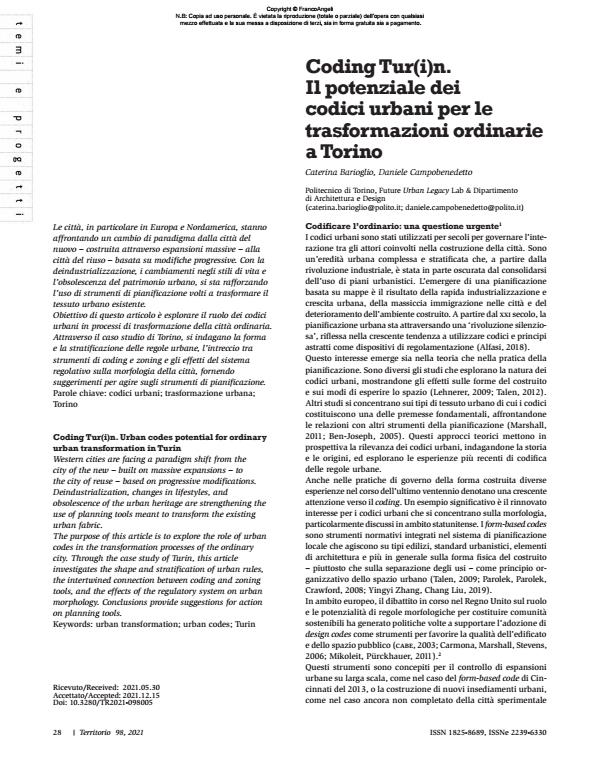Coding Tur(i)n. Urban codes potential for ordinary urban transformation in Turin
Journal title TERRITORIO
Author/s Caterina Barioglio, Daniele Campobenedetto
Publishing Year 2022 Issue 2021/98
Language Italian Pages 11 P. 28-38 File size 530 KB
DOI 10.3280/TR2021-098005
DOI is like a bar code for intellectual property: to have more infomation
click here
Below, you can see the article first page
If you want to buy this article in PDF format, you can do it, following the instructions to buy download credits

FrancoAngeli is member of Publishers International Linking Association, Inc (PILA), a not-for-profit association which run the CrossRef service enabling links to and from online scholarly content.
Western cities are facing a paradigm shift from the city of the new - built on massive expansions - to the city of reuse - based on progressive modifications. Deindustrialization, changes in lifestyles, and obsolescence of the urban heritage are strengthening the use of planning tools meant to transform the existing urban fabric. The purpose of this article is to explore the role of urban codes in the transformation processes of the ordinary city. Through the case study of Turin, this article investigates the shape and stratification of urban rules, the intertwined connection between coding and zoning tools, and the effects of the regulatory system on urban morphology. Conclusions provide suggestions for action on planning tools.
Keywords: urban transformation; urban codes; Turin
Caterina Barioglio, Daniele Campobenedetto, Coding Tur(i)n. Il potenziale dei codici urbani per le trasformazioni ordinarie a Torino in "TERRITORIO" 98/2021, pp 28-38, DOI: 10.3280/TR2021-098005